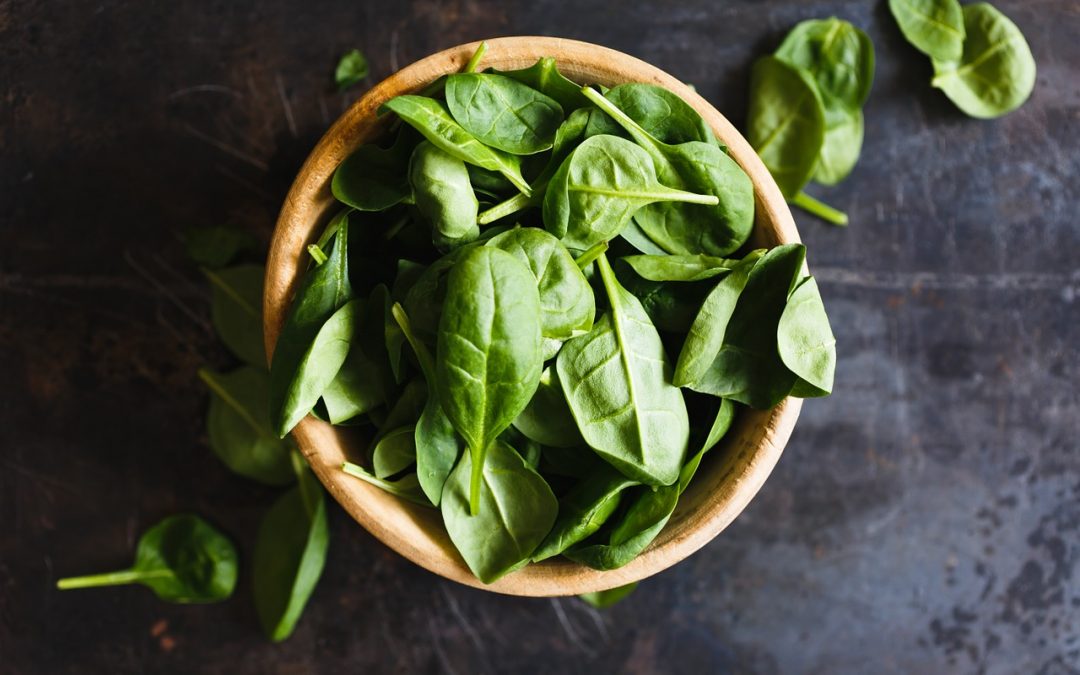
by dnshah | Apr 29, 2019 | Diet and Weight Loss, Health and Wellness Tips, Stress Management
A majority of folks have asked me how they would know that they are experiencing a dietary or digestive issue. The top sign is not a gastro-intestinal one, so people don’t always catch it early. Here are the top 10 signs of a dietary issue (in order of frequency):
- Brain Fog, or other decline in brain function
- Migraines
- Chronic Fatigue (unexplained low energy levels)
- Gastrointestinal Issues (Gas, Bloating, Nausea, Diarrhea, Constipation, Frequent BMs)
- This includes IBS- Irritable Bowel Syndrome and SIBO- Small Intestine Bacterial Overgrowth symptoms which can be seen by chronic bad breath, GI issues, nutrient malabsorption, and frequent BMs)
- This includes food intolerances which seems to occur after damage to the gut microbiome (“leaky gut”), for those people with a genetic vulnerability to some health issue.
- Joint Pain (or other unexplained chronic inflammation)
- Skin conditions (rash, dryness, flare-up)
- Nutrient Malabsorption (Unexplained weight gain or loss)
- Loss of immune tolerance
- Mood swings (including anxiety or depression)
- Any Autoimmune Condition (Diabetes Type II, Rheumatoid Arthritis, Hashimoto’s, Graves’, Celiac, etc.)
The type of diet that can cause these signs involves consuming some ingredients that a body can’t digest appropriately. The challenge is that our digestion is bio-individual. What someone else can digest easily, you may not be able to. Reasons for bio-individuality are difference in genetic vulnerability, environmental factors, and microbe exposures – even identical twins have bio-individual digestion.
To resolve this there are 2 schools of thought:
- Elimination Diet Trials – guess what could be your issue (dairy, gluten, nightshades, lectins, etc.) and eliminate them from your diet for a given period of time to see if conditions improve. Recommended Trial time is 6 weeks for EACH ingredient. So this takes time, structure, and some knowledge of how to balance your nutrition with missing ingredients. Alternatively, you can adopt an existing diet trial that removes common sensitivities – Paleo, Keto, Gluten Free, Pegan, Vegan, etc. My book, RIGHT Diet for Autoimmunity, provides a vegetarian journey without gluten, dairy, or refined sugar.
- Food Sensitivity Testing – Take a blood test and wait for results. The results will indicate which food ingredients are triggering issues within the body’s immune system. This option costs several hundred dollars, but provides immediate answers – often times with a 98% accuracy. Nutritional therapists, Health Coaches, and Functional doctors are able to refer you to the right test/lab as there are many options to choose from.
If you experience any of these signs discussed, FIRST go to your medical practitioner to rule out more SERIOUS issues. Then seek the guidance of a health coach, nutritional therapist, or functional doctor to assist you with elimination diets and/or food sensitivity testing. Any time you make dietary changes, you still want to ensure you are still getting the recommended dietary allowances of essential nutrition. Contact me and I can set up your testing and nutritional consult. Some of the labs I can help you with are published on my site.

by dnshah | Apr 28, 2019 | Diet and Weight Loss, Recipes, Side Dish, Stress Management
Serves 4
INGREDIENTS
1lb Kale, stemmed & chopped
1 cup cherry tomatoes, halved
½ cup vegetable stock
¼ onion, sliced
4 garlic cloves, minced
1 Tablespoon lemon juice
2 teaspoons EVOO
Dash black pepper
METHOD
- In a large pan over medium heat, sauté onions and garlic in EVOO until lightly toasted (1-2 minutes).
- Mix in stock and kale and cover to simmer, lowering heat to medium low.
- Cook until kale wilts (5 minutes)
- Mix in tomatoes, and continue cooking until kale is tender.
- Plate the kale, topping it with lemon juice and pepper.

by dnshah | Apr 28, 2019 | Age Defying, Diet and Weight Loss, Health and Wellness Tips, Obesity, Stress Management
For the last 15 years, research shows that diet and lifestyle changes can reduce the risk of type 2 diabetes (T2D) in general. But the latest information shows that race impacts this risk, for example Native Americans are at higher than average risk of T2D. For the last 10 years, eight pueblos of New Mexico and the Navajo Nation have been trialing dietary changes to prevent and reverse diabetes, namely going plant-based…. and they’ve been successful. Thanks to many experts from the Navajo Nation, the Physician’s Committee for Responsible Medicine, and the director of diabetes education, a four-week plant-based eating challenge was conducted citing these significant benefits.
Now they are expanding with more plant-based cooking classes, plant-based “chef’s special” meal options in their cafeterias, professional development seminars for hospital chefs, and presentations with additional materials. Whether you are at a higher risk for T2D or not, you too can be empowered with strategies to improve your health. Contact us for your first complimentary consultation.

by dnshah | Apr 28, 2019 | Health and Wellness Tips, Stress Management
Women typically carry purses around, and over time these bags become heavier. These heavier bags can cause harm, in terms of imbalanced skeletal stress and pain. Consider and prioritize the contents: a wallet, cosmetics, glasses, charging block, office supplies, water bottle, etc. And for the busy traveler, add in a laptop, charger, a meal, hand sanitizer, and so on. The correct weight of a bag carried everywhere is the weight of a newborn. Anything more than this can sway your balance from your shoulders to your hips, impacting your back and spine. In order to maintain that natural curve of our spines, we have to activate the muscles that allow us to be aligned with ease.
Carrying a bag over the same shoulder day after day is not recommended. Think balance and alignment. Alternate the sides you shoulder a bag or use a cross-body bag or backpack. The backpack is the best choice allowing full symmetry as your body comes together to shoulder the weight. The second best option is the cross-body which allows a close body fit, less stress to the spine, and a load that is symmetrical to carry. The third choice is to alternate a bag across the shoulders.

by dnshah | Apr 28, 2019 | Age Defying, Diet and Weight Loss, Health and Wellness Tips, Stress Management
The latest research has found that just one serving of leafy greens a day can take more than a decade (11 years) off an aging brain, in terms of decreased brain power; and two servings a day can have even greater results. What does this mean exactly? Our memory and brain function typically decline as we age; but we can take actions that allow us to not only stop memory loss, but also reverse it. One such action is eating our daily serving of greens.
In the past I’ve talked about the importance of G-B-O-M-B-S, the acronym used to discuss the daily foods one should eat to be healthy. It stands for Greens, Beans, Onions, Mushrooms, Berries, and Seeds/Nuts. That “G” just got upgraded to first class. Realistically the brain is one of our most prized organs, and if there is any nutrition out there that can minimize damage and promote improvement, it has to be talked about.
The strongest association with slowing down our aging decline in the brain is consumption of spinach, kale, collard greens, and lettuce varieties. Does it really matter if it is the vitamin K1, betacarotene, phylloquinone, lutein, nitrate, folate, kaempferol or alpha tocopherol? Most people don’t care as long as we are getting the benefits of consuming the greens in our meals or our smoothies (or both)! Remember that the Environmental Working Group states that spinach, kale, and celery made the dirty dozen list in 2019 and should be purchased organic.
For those actively trying to improve brain function, nutritional supplements can have a big impact, especially in terms of curcumin, a quality omega 3 (fish oil, flax meal), B vitamin supplements, and co-enzyme Q10. For more information, seek out a health professional to help you work your best strategy to improve you. Yes, you can!
Resources
2018, January 16; Barnes, LL; Bennett, DA; Booth, SL; Dawson-Hughes, B; Morris, MC; Wang, Y.; Neurology 90(3); Nutrients and Bioactives in Green Leafy Vegetables and Cognitive Decline.

by dnshah | Jan 28, 2019 | Age Defying, Diet and Weight Loss, Health and Wellness Tips, Obesity, Stress Management
Red grapefruit is Texas’ state fruit, and celebrated in season each year (November – May). If you’ve never had Texas grapefruit, don’t miss out; and by the way, February is National Grapefruit Month, so toss them into your favorite citrus salad, bowl, or entrée.
Grapefruits are grown all over the world and come in a variety of colors. The US is a leading producer (along with China and Mexico), and Texas is a major commercial exporter of this fruit.
They are an excellent source of vitamins A & C, fiber, and also contain potassium, calcium, and an array of phytochemicals. This means it is an excellent food to boost immunity. And you know my philosophy: when you can boost your immune system, it can protect you from other evils! Eating this gem on a regular basis can ultimately help to lower risks of obesity, diabetes, heart disease (cholesterol & blood pressure), IBS, osteoporosis, and some cancers (namely colon, esophageal, & oral). Note that some of these studies were animal-based and not human; but I am presenting grapefruit as a super fruit based on the collection of all of these benefits seen in research.
NOTE: If you are on prescription medication, grapefruit can react with certain medications and enzymes affecting the quantity of medication absorption and efficacy. Please check with your doctor before mixing grapefruit and medications.








